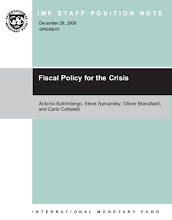In a bid to aid Indian companies to raise money overseas, especially in the present falling market, the finance ministry has proposed changes in the pricing formula for global depository receipts (GDRs) and American depositary receipts (ADRs). In falling markets, the current pricing norm effectively results in the overseas issue being priced farther from, and higher than, the prevailing domestic market price. Companies wishing to tap the overseas market may not do so as the offer price is not right. The ministry has proposed to reduce the time period for calculating the minimum offer price for overseas issues to two months from six months earlier.
The government move comes after representations from companies and intermediaries that the pricing formula effectively shuts out the fund raising avenue. Companies have struggled to find takers for these issues as the shares are available cheaper on the bourses.
Currently, the ADR/GDR issue price is determined on the basis of the higher of the last six months’ average price or last 15 days’ average price. The idea to keep six months average price was to avoid promoters from doing bulk allotment at a discounted price. The logic was that the promoter or interested parties cannot artificially depress prices for such a long period. The finance ministry has now proposed to reduce it to the higher of the two months’ average price or the last 15 days average price. The new pricing rules are expected to reflect accurate and more realistic prices of the ADR/GDR issues.
Experts in the industry have come out with mixed opinion for the move as some feel that the timing of the issue is more critical, whether two months or six months, especially in the present volatile markets. These are the companies which are in desperate need of alternative financing routes as debt becomes scarce and expensive in the local market as the Reserve Bank unleashes anti inflationary measures. It is more important to give companies a free hand on pricing, they feel. However, many experts also feel that the reduction in time period will help companies come out with far better realistic pricing than the previous waiting period helping them raise money.
The government move comes after representations from companies and intermediaries that the pricing formula effectively shuts out the fund raising avenue. Companies have struggled to find takers for these issues as the shares are available cheaper on the bourses.
Currently, the ADR/GDR issue price is determined on the basis of the higher of the last six months’ average price or last 15 days’ average price. The idea to keep six months average price was to avoid promoters from doing bulk allotment at a discounted price. The logic was that the promoter or interested parties cannot artificially depress prices for such a long period. The finance ministry has now proposed to reduce it to the higher of the two months’ average price or the last 15 days average price. The new pricing rules are expected to reflect accurate and more realistic prices of the ADR/GDR issues.
Experts in the industry have come out with mixed opinion for the move as some feel that the timing of the issue is more critical, whether two months or six months, especially in the present volatile markets. These are the companies which are in desperate need of alternative financing routes as debt becomes scarce and expensive in the local market as the Reserve Bank unleashes anti inflationary measures. It is more important to give companies a free hand on pricing, they feel. However, many experts also feel that the reduction in time period will help companies come out with far better realistic pricing than the previous waiting period helping them raise money.




No comments:
Post a Comment